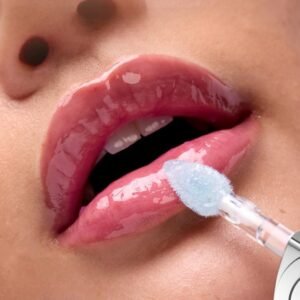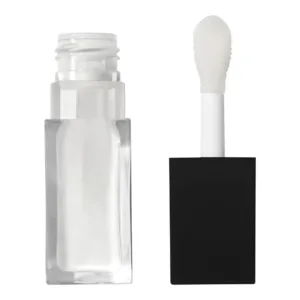Clean Ingredient Lip Oil vs. Vegan Deep Dive:
How Private Brands Can Choose the Right Formula to Capture the Market
- Addressing the Pain Points: Why Are Clean ingredient/Vegan Lip Oils a Must-Have for Private Labels?
- Core Differences: Clean ingredient Lip Oils vs. Vegan
- OEM Action Guide: From Formula to Launch—Avoid Common Pitfalls
- Future Trends: Innovation + Sustainability—New Growth for Clean/Vegan Lip Oils
- FAQ: Common Questions from OEM Brands

2024 OEM Brand Survey Shows: 63% of clients explicitly request “clean ingredient lip oil”. While 41% of emerging brands miss orders beacause of non-vegan labels. When consumers start asking, “Are the ingredients in this lip oil safe or animal-derived?”—Can your product provide a confident answer?
This article uses data from Euromonitor, Statista, and the EU CosIng Database. It explains the key differences between clean and vegan lip oils. You’ll find practical guides for OEM brands. Also, it looks at future trends to help you succeed in the market.
Addressing the Pain Points: Why Are Clean ingredient/Vegan Lip Oils a Must-Have for Private Labels?
The global lip care market is undergoing an “ingredient revolution.”
Euromonitor (2024) projects that the global lip care market will grow at a rate of 7.2% from 2023 to 2030. By 2030, lip oils with “clean ingredients” will make up 52% of the market. This includes options without parabens, MIT, or mineral oil, as well as vegan choices. This is a rise from 35% in 2023.
Consumers are voting with their wallets:
- Sensitive skin users: 68% of them choose lip oil based on “harm-free ingredients” (Statista, 2025).
- Ethical consumers: 72% of them will pay 15% more for “vegan-certified” lip oil (Cosmetics Europe, 2024).
- Retailers: Drugstores, eco-beauty boutiques, and other channels now explicitly require OEM brands to provide “clean/vegan dual certifications.”
Conclusion: Clean and vegan lip oils are not just trends—they’re the “order codes” for OEM brands.
Core Differences: Clean ingredient Lip Oils vs. Vegan
To choose the right formula, first clarify their “core logic”: clean lip oils focus on “safety,” while vegan lip oils emphasize “ethics.” Below is a comparison of ingredients, certifications, and use cases, supported by authoritative data:
1. Ingredient Differences: Safety ≠ Ethics—Key to “Prohibited Lists”
Key Note: Clean ingredient lip oil ≠ vegan lip oil. For instance, a “clean lip oil” can have beeswax, which comes from animals. On the other hand, a “vegan lip oil” might use synthetic preservatives like parabens. OEM brands need to explain if the client cares more about “safety” or “ethics.”
2. Certification Standards: Compliance Is the Ticket, Certifications Are the Premium
- Clean lip oil: It must pass the EU CosIng Safety Catalog (2025 update) for low irritation. Or it has a “low-sensitivity certification,” such as France’s Cosmet’Free.
- Vegan lip oil: Must carry the Leaping Bunny Certification (international authoritative animal protection certification) or USDA Organic (strengthens the “natural” label).
Data Support: In the U.S. and Europe, vegan lip oils are about 35% pricier (Statista, 2025). (which with Leaping Bunny Certification)
3. Use Cases: Align with Channels to Reach Your Audience
- Clean lip oil: Drugstores (e.g., Watsons), sensitive skin counters (e.g., La Roche-Posay partnerships).
- Vegan lip oil: Eco-brand collaborations (e.g., Patagonia co-branded products), vegan beauty boutiques (e.g., Credo Beauty).
OEM Action Guide: From Formula to Launch—Avoid Common Pitfalls
Step 1: Formula Positioning—Clarify Your Target Audience and Core Selling Point
- Drugstore/sensitive skin channels: Prioritize “clean ingredient lip oil.” Use cold-pressed base oils (e.g., jojoba oil) to retain active ingredients, and avoid solvent extraction. Suppliers must provide COAs (Certificates of Testing) and heavy metal test reports (required by EU CosIng).
- European/U.S. DTC/eco-brands: Prioritize “vegan lip oil.” Use plant waxes (e.g., Candelilla wax, melting point 68-72°C, similar to beeswax). Formulas must pass Leaping Bunny Certification (base audit fee: $500; 30% cost saved if suppliers are pre-certified).
Case Study: L’Oréal’s 2024 “vegan lip oil” line uses organic coconut oil from regenerative farming. This method reduces carbon emissions by 30%. It also has Leaping Bunny Certification. In its first month, the line reached €8 million in sales (L’Oréal, 2024).
Step 2: Supply Chain Management—Avoid Pitfalls in Ingredients and Production
- Clean Formula Supply Chain:
- Ingredients: Source from “USDA Organic” suppliers (costs 20% higher than standard, but bulk purchasing keeps premiums at 10-15%).
- Production: Avoid shared lines with non-clean products (prevent cross-contamination); add 5-8% equipment cleaning costs.
- Vegan Formula Supply Chain:
- Ingredients: Confirm plant wax suppliers are “non-mixed production” (prevent animal-derived contamination).
- Production: Use dedicated facilities (specialized mixers, packaging machines); add 10-15% costs (Global CosIng, 2025).
Step 3: Cost and Pricing—Balance Profit and Market Acceptance
Note: Avoid overpricing. Statista (2025) found consumers’ “premium tolerance” for clean/vegan lip oils caps at 50%—exceeding this may reduce sales.
Future Trends: Innovation + Sustainability—New Growth for Clean/Vegan Lip Oils
1. Tech Innovations: Nano-Encapsulation and AI Formulas
- Nano-encapsulation: Encapsulate vitamin E, white lupine oil, and other active ingredients in plant oils. This can increase absorption by 40% (International Journal of Cosmetic Science, 2024).
- AI Formulation Tools: Revieve creates EU CosIng-compliant “clean+vegan” formulas in minutes. This process reduces R&D time by 30%.
2. Sustainability: Regenerative Agriculture + Zero Waste
- Regenerative Agriculture: Partner with Moroccan farms for organic jojoba oil. They use water-saving irrigation and crop rotation. This costs a 5% premium but attracts eco-conscious buyers.
- Zero-Waste Packaging: Glass bottles with soybean-based ink (90% recyclable) (UNEP, 2025).
FAQ: Common Questions from OEM Brands
Q1: Must clean lip oil exclude all synthetic ingredients?
A: No. The key is “harm-free.” The EU permits small amounts of phenoxyethanol (a preservative with an EWG rating of 3) in clean lip oils. This is fine if it meets the Cosmetic Supervision and Administration Regulations and keeps to 1% or less.
Q2: Is certification for small-batch vegan lip oil expensive?
A: Leaping Bunny Certification starts at 500(basicaudit).Ifsuppliersarepre−certified,costsdropby303,000) but ideal for premium lines.
Q3: Can a product be both clean and vegan?
A: Yes. Label it as “clean ingredient” (e.g., “Paraben-free”) and “vegan” (e.g., “beeswax-free”) to target both audiences. For example, a lip oil could claim “No Parabens (clean)” and “No Beeswax (vegan).”
Conclusion:Clean and vegan lip oils offer options and chances for private brands. They can target specific audiences and meet strict standards.
This guide offers ingredient comparisons, steps you can take, and trend insights. Attract your audience fast. Support your products with strong data and certifications. Ride the 2025 “clean+vegan” market wave.
(Data sources: Euromonitor (2024), Statista (2025), EU CosIng Database (2025), Journal of Cosmetic Dermatology (2023), etc.)
